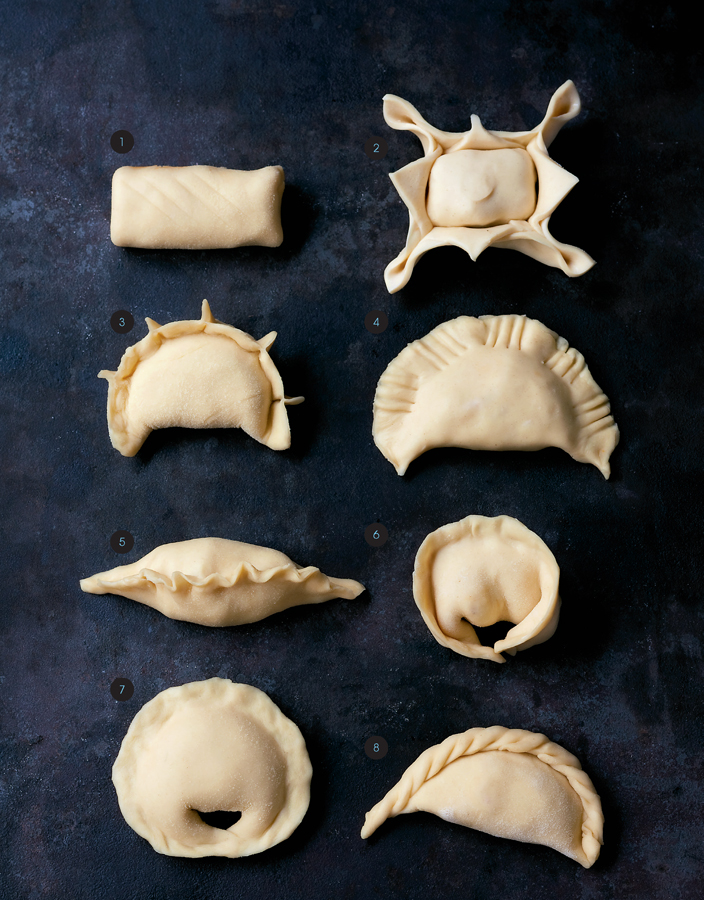
THE EDGING
AFTER SEALING THE EMPANADA, YOU CAN GIVE IT WHATEVER LOOK YOU LIKE, BASED ON THE TRADITIONAL DECORATIONS OR NOT. HERE ARE SOME REPULGUE USED BY CLASICO ARGENTINO.
CHORIEMPA (1) Place a sausage on the round of dough and fold the edges inward. Carefully wrap the sausage in the dough.
PASTELITO (2) Place a square of dough on the work surface. Place a portion of filling in the middle. Place a second square of dough on top, offsetting the corners relative to the first square, so you make an 8-pointed star. Pinch together the corners of the bottom square.
HUMITA (3) Once the empanada has been shaped into a half-moon, pinch the edge in five places to make a decoration with five points.
POLLO (4) Once the empanada has been shaped into a half-moon, seal the edges using a fork: mark the dough in five places to make a striped decoration.
CORDERO (5) Once the empanada has been shaped into a half-moon, make waves in the edge with your fingers.
JAMON Y QUESO (6) Once the empanada has been shaped into a half-moon and the edges are well sealed, bring the two points towards each other and join them together.
PUERRO (7) Once the empanada has been shaped into a half-moon and the edges are well sealed, gather the two points together and join them while keeping the edging quite flat, so your empanada is almost circular.
CARNE (8) Once the empanada has been shaped into a half-moon and the edges are well sealed, fold the edges over themselves 13 consecutive times, from one end to the other.
The ‘carne’ decoration is the most classic edging, the ‘pollo’ one is the easiest to do.
You will encounter still more decorations at Clasico Argentino. These are the most common ones.